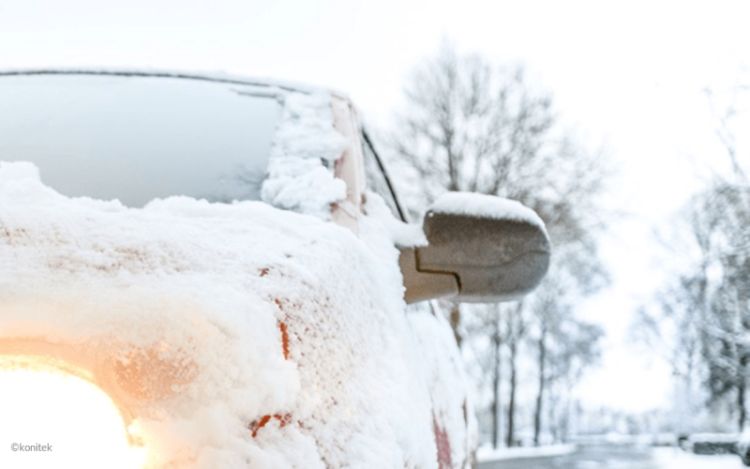6 tips to maximize Electric Vehicles efficiency in winter
Wed, 12/01/2022 - 07:53
Tips & Perspectives
One of the wintertime concerns for many fleet managers is preserving the energy and range of their electric vehicles (EV) and maximizing their efficiency in the face of low or even sub-zero temperatures.

If you have electric vehicles in your fleet, you have probably noticed that cold temperatures are not beneficial to their electric range. As the temperature drops, the electrolyte fluid inside the battery cells slows down, reducing power supply and charging speed performance.
To test the range and charging time of popular electric vehicles in winter conditions, the Norwegian Automobile Federation (NAF) carried out a thorough study of 20 electric vehicles in real-world winter driving conditions in 2020. The study discovered that the EVs charged slower during these conditions and lost 18.5% of their range on average, with some of the more current models losing just 9%.
Take a look at these six tips to keep your electric fleet running smoothly and efficiently during the winter days:
1. Park your EV in a garage to keep the batteries warm
If you cannot park your fleet vehicles in a garage, park them in an enclosed area or outside in the sun to preheat the batteries. Since the EV battery is configured to maintain a specific temperature, it will use electricity to warm up if it falls below that temperature.2. Prepare the batteries and the cabin
While still plugged in, most EVs allow you to set a departure time and warm up the battery and cabin. Use this option to ensure that the battery is at the proper temperature before taking off and that no battery power is lost due to cabin heating. In addition, before driving, make sure the battery is charged to at least 20% of its maximum capacity. That reserve may be required later to reheat the battery.3. Use the heat strategically
Since heating the cabin of an EV consumes a lot of battery power, it is better to use heat strategically. While driving, keep the heater on at a low level rather than turning it on and off all the time to save energy.4. Check tire pressure
Check and adjust your tires before driving in cold weather, then re-adjust the pressure when the temperature outside rises again. Falling temperatures cause tire pressure to decrease as air enters the contracts, resulting in increased rolling resistance and, as a result, a shorter driving range.5. Drive safely
Driving in the cold requires more from vehicles since the air density creates more drag. Therefore, keep conscious of the risks of driving in cold conditions and choose to travel at 10 to 15 km/h below the speed limit, avoid sudden acceleration and braking, and move at a steady pace.6. Make use of regenerative braking or freewheel
Braking early and gradually allows you to gather and store energy from your vehicle's motion as electricity. Most electric vehicles will enable you to adjust the level of regenerative braking, which is an excellent way to save energy. If you do not need to decelerate the vehicle, in that case, you can also set the transmission on neutral (N) and take advantage of the vehicle's inertia to take you as far as possible without using energy.There is always a lot to consider when purchasing electric vehicles for your fleet, and understanding all the benefits and challenges that come with it is vital. If you want to get the most out of your investment in electric vehicles, consider these six tips to understand how you can maximize their range and charging time.
Post tags:
- Frotcom
- EVs
- Electric vehicles
- Electric Energy
- EV efficiency
- EV range
- Fleet managers
- Road safety
- Drive safely
- Adverse weather conditions
- Winter

